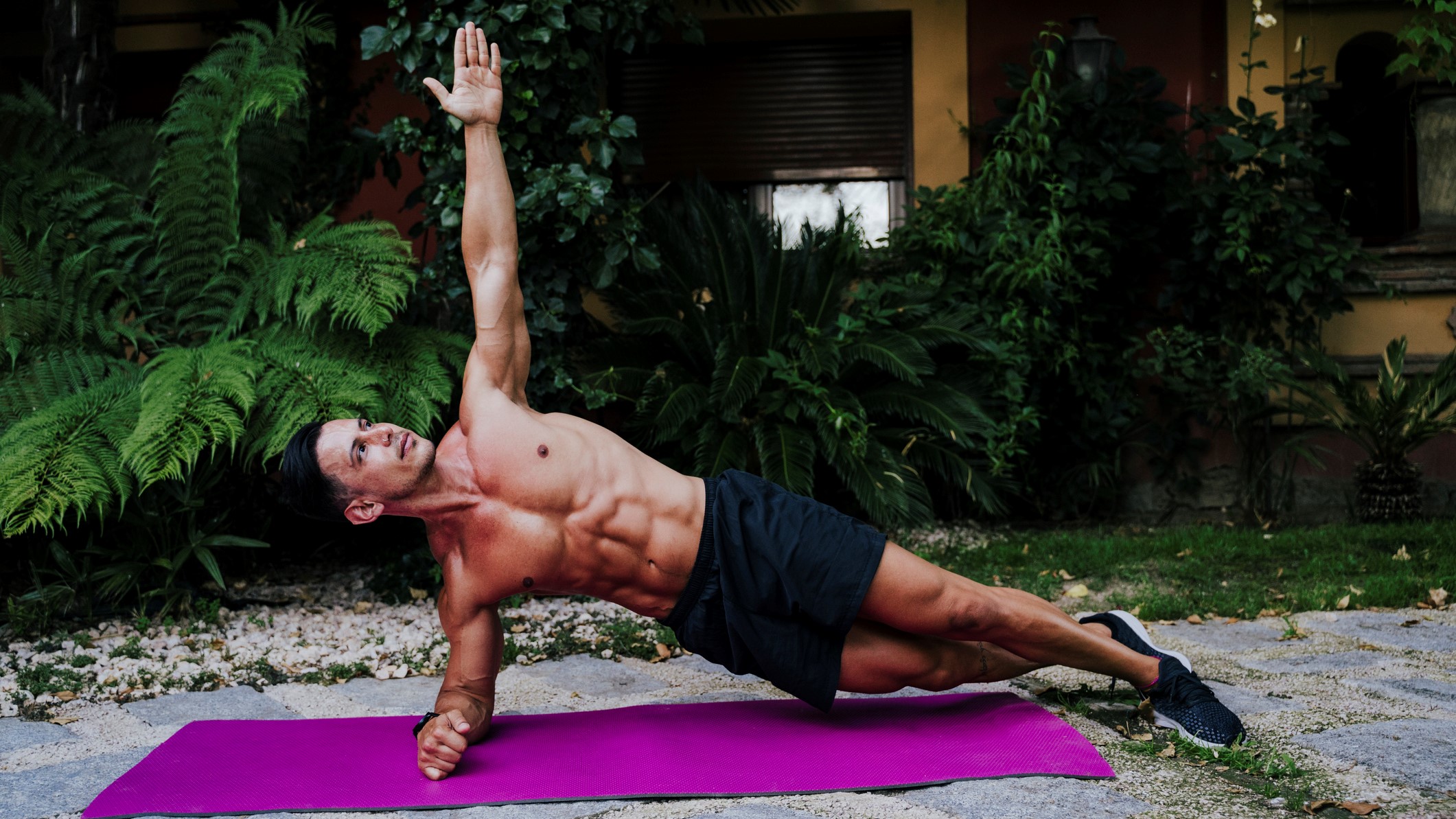Forget weights — this bodyweight workout torches your entire body in 13 moves

If you’re looking for a quick workout to get your heart rate up but don’t have time to get to the gym, I’ve found exactly what you need.
This bodyweight workout torches all of the major muscle groups in the body in just 13 exercises. The best part? You can do the entire thing in under 15 minutes, or repeat it twice through if you’re looking for a longer workout. Read on to find out more.
While weight training might give you faster results when it comes to building muscle, there are some huge benefits to bodyweight training. Not only is it cheaper and more convenient (no need to shop for the best adjustable dumbbells or the best resistance bands), but bodyweight training can teach you to move with a better range of motion and is suitable for beginners looking to build up to lifting weights.
The workout below has been developed by trainers Aubri and Liv and doesn’t require any equipment, but we’d recommend grabbing one of the best yoga mats to work out on to minimize the impact on your joints.
What is the workout?
The workout follows a Tabata training approach — you’ll work at a high intensity for 40 seconds, then rest for 20. There’s 13 different exercises in total, so the workout takes 13 minutes in total. If you’re looking for a longer workout, rest for a few minutes before repeating the circuit again.
The workout includes the following exercises:
Single-leg deadlift to knee drive: Begin by standing straight with both feet under your hips. Engage your core, shift your weight to your left leg and, with just the hint of a bend in your left knee, breathe out and hinge at the hips while you drive your right leg up and behind you, keeping it as straight as you can, while you lower your torso toward the ground.
Get instant access to breaking news, the hottest reviews, great deals and helpful tips.
Don’t bend or arch your back, and maintain that almost-straight standing leg — at the end of the hinge movement you should be creating a relatively straight line from right foot to head. Imagine you are one of those plastic drinking birds, but with slightly more dignity.
From here, breathe in as you slowly return to a standing position, and bend your right knee, bringing it up towards your torso. Lower it back to your starting position, that’s one rep. Keep alternating sides for 40 seconds.
Kneeling squats: To do kneeling squats, start by kneeling down with your hands by your temples. From your kneeling position, step one foot forward, with your knee bent, and press into the floor to lift your weight up. Stay in a low squat position, then lower back to your kneeling position. The next rep, lead with the other leg, and keep alternating sides for the entire 40 seconds. Make sure to keep your core engaged throughout the exercise, and keep the squat as low as possible.
Mountain climbers: The easiest way to explain the movement involved in mountain climbers is that it's like running in a plank position. To do a mountain climber, start in a plank position, with your hands shoulder-width apart, your back flat, and your core engaged (think about sucking your belly button into your spine).
From here, bend your left knee and bring it into your chest, as far as you can. Pause, then straighten your leg back to its starting position and bring your right knee in underneath your body. Keep repeating this movement and build up speed until you’re running your knees in and out. Here’s more on how to do a mountain climber, and the variations to try.
Rotating side planks: To do rotating side planks, start in a side plank position — lie straight out on one side, legs stacked. Rest your forearm flat on the floor and ensure your elbow is in line with your shoulder. Engage your abs and raise your hips and knees from the floor, keeping a straight line from head to feet. Only your forearm and foot should be in contact with the ground. Don’t allow your hips to sag and keep looking straight ahead.
Raise your top arm to the ceiling, engage your core, and twist to rotate your arm underneath your body. Then reverse the movement so your arm is extended over your body again. Complete 20 seconds on one side before switching, or if you’re doing two circuits, do 40 seconds on one side, then 40 seconds on the other the next round.
A post shared by aubri & liv (@aubriandliv)
A photo posted by on
What are the benefits of bodyweight training?
As mentioned above, there are some huge benefits to training with just your body weight, one being you can fit this workout in just about anywhere. Bodyweight training also helps improve your coordination and mobility, reducing your risk of injury when you do add weights to the movements.
Another name for bodyweight training is calisthenics. One study published in the Journal of Strength and Conditioning found significant increases in upper body strength following a calisthenics regime compared with a bench press group.
As well as developing strength and coordination, calisthenics, or bodyweight exercises mimic day-to-day movement patterns. Most bodyweight exercises will work more than one muscle group at a time, mimicking everyday movements like climbing a flight of stairs, bending down to pick something up, or putting something up on a shelf.
Looking for more inspiration? This calisthenics workout only uses 4 moves to build full-body strength.
More from Tom's Guide
- I just tried Chris Hemsworth’s 200-rep bodyweight workout — and wow
- Pull-up vs chin-up: Which is better for building strength?
- I did 50 single-leg glute bridges for a week — here’s the results

Jane McGuire is Tom's Guide's Fitness editor, which means she looks after everything fitness related - from running gear to yoga mats. An avid runner, Jane has tested and reviewed fitness products for the past five years, so knows what to look for when finding a good running watch or a pair of shorts with pockets big enough for your smartphone. When she's not pounding the pavements, you'll find Jane striding round the Surrey Hills, taking far too many photos of her puppy.
